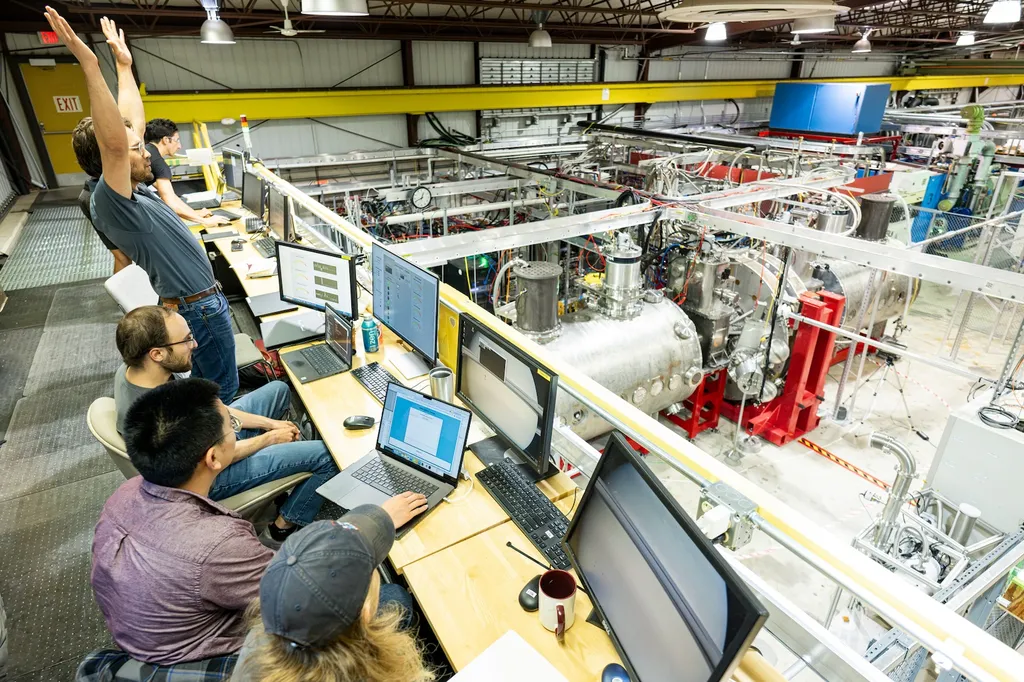In a significant stride toward practical fusion energy, researchers at the University of Washington and MSNW LLC have unveiled a novel approach to achieving fusion gain using a compact reactor design. The study, published in the journal “Nuclear Fusion” (which translates to “Fusion Nuclei” in English), introduces a method for forming and compressing a field-reversed configuration (FRC) plasmoid, potentially paving the way for a new era in clean energy production.
At the heart of this innovation is the staged magnetic compression of an FRC, a type of plasma confinement concept that has been explored for decades but has yet to yield a viable fusion reactor. The lead author, John Slough of MSNW LLC in Bellevue, Washington, explains, “Our approach leverages empirical scaling to achieve fusion gain as large as 10, making a compact reactor feasible.”
The key to this breakthrough lies in the fusion gain equation for FRCs, which is essentially independent of the radial scale. This means that a smaller, more compact reactor can achieve the same fusion gains as larger designs. The researchers propose using a large formation chamber combined with a specific axial magnetic field reversal time to generate a high initial temperature FRC. This FRC is then accelerated and translated through a series of cylindrical coils of decreasing radius, compressing the plasma isentropically and adiabatically.
The final stage of the process involves a confinement and burn chamber with a vacuum field of 7–9 Tesla, which is compressed by the FRC on insertion to 35 Tesla. This compression results in fusion gain conditions for the 2–5 millisecond transit, with a D–T fusion yield of 20–40 megajoules per pulse for a 3.5 megajoule FRC. The large ratio of FRC to inner wall radius substantially lowers the FRC edge pressure, greatly reducing both particle and thermal losses.
One of the most compelling aspects of this research is the potential for energy recovery. The final ejection and expansion of the FRC into a large, low-field mirror chamber provide a mechanism for recovering the FRC’s energy, a feature that could significantly improve the economic viability of fusion power.
The implications for the energy sector are profound. If this compact fusion reactor design can be successfully scaled up, it could revolutionize the way we produce energy, offering a clean, virtually limitless power source. “This research shapes future developments in the field by demonstrating a practical path to fusion gain in a compact reactor,” Slough notes. “It’s a significant step toward making fusion energy a reality.”
While there are still many challenges to overcome, this research represents a promising advance in the quest for practical fusion energy. As the world grapples with the urgent need for clean, sustainable power, innovations like this offer hope for a brighter, more energy-secure future. The study’s publication in “Nuclear Fusion” underscores its significance and potential impact on the global energy landscape.

